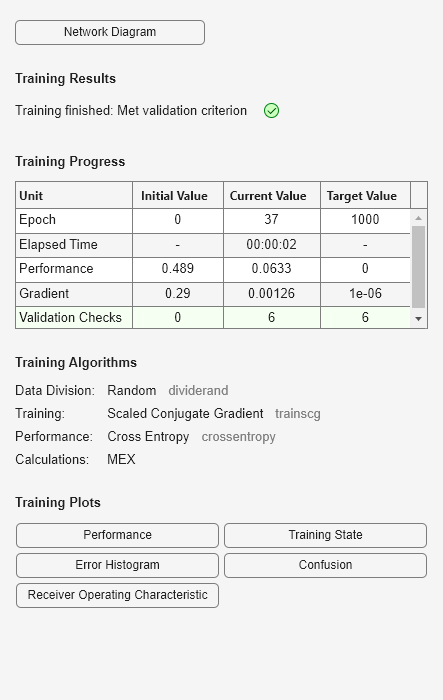crossentropy
Neural network performance
Description
perf = crossentropy(net,targets,outputs,perfWeights)y near 1-t), with very little
penalty for fairly correct classifications (y near t).
Minimizing cross-entropy leads to good classifiers.
The cross-entropy for each pair of output-target elements is calculated as: ce =
-t .* log(y).
The aggregate cross-entropy performance is the mean of the individual values:
perf = sum(ce(:))/numel(ce).
Special case (N = 1): If an output consists of only one element, then the outputs and
targets are interpreted as binary encoding. That is, there are two classes with targets of 0
and 1, whereas in 1-of-N encoding, there are two or more classes. The binary cross-entropy
expression is: ce = -t .* log(y) - (1-t) .* log(1-y) .
perf = crossentropy(___,Name,Value)
Examples
Input Arguments
Name-Value Arguments
Output Arguments
Version History
Introduced in R2013b
